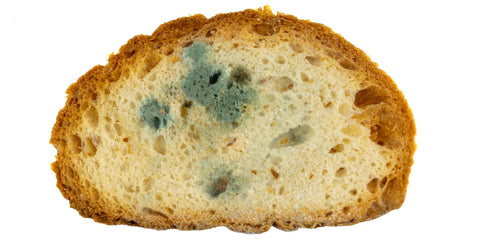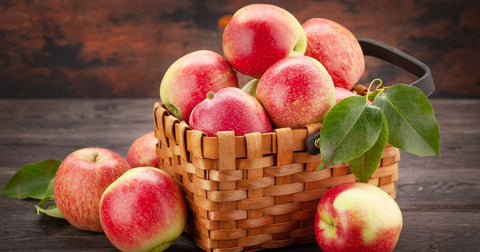Discovering mold on your bread is a common kitchen mishap. While it might seem tempting to simply cut off the moldy part and eat the rest, the question remains: "What happens if you eat moldy bread?" This article will explore the potential risks of consuming moldy bread, differentiate between types of mold, and guide you on when to be concerned.

Understanding Mold on Bread
Mold on bread isn't just one thing. It's a type of fungus that reproduces by releasing tiny spores into the air. These spores land on surfaces, including food, and under the right conditions (warmth, moisture), they grow and become visible as fuzzy patches.
Bread Mold: Not Always the Same
Different types of mold can grow on bread. Some are relatively harmless, while others can produce harmful substances called mycotoxins.
-
Common culprits: Penicillium, Rhizopus, and Aspergillus are frequent bread mold varieties.
-
Color variations: Mold can appear in various colors, including white, green, blue, and black.
What Happens If You Eat Moldy Bread? The Potential Consequences
The effects of eating moldy bread vary depending on several factors:

-
Type of Mold: Some molds produce mycotoxins, while others don't.
-
Amount Consumed: A small bite of slightly moldy bread might cause minimal symptoms, while consuming a larger portion of heavily moldy bread increases the risk.
-
Individual Sensitivity: Some people are more sensitive to mold and mycotoxins than others.
-
Immune System Strength: Individuals with weakened immune systems are at a higher risk of complications.
Potential Risks of Eating Moldy Bread:
-
Digestive Upset: The most common reaction is mild digestive upset, including nausea, vomiting, or diarrhea.
-
Allergic Reactions: Some people are allergic to mold, and consuming moldy bread can trigger allergic reactions like hives, itching, or respiratory problems.
-
Mycotoxin Exposure: Certain molds produce mycotoxins, which can be harmful. While the risk from a small amount is low, chronic exposure to high levels of mycotoxins can lead to serious health problems.
Why Is Mold on Bread Dangerous?
While the risk from a single incident is generally low, mycotoxins can pose long-term health risks with chronic exposure. This is why it's best to avoid moldy bread altogether.
Accidentally Ate Moldy Bread: What to Do
If you accidentally ate a small amount of moldy bread:

-
Don't panic: Most likely, you'll experience mild or no symptoms.
-
Drink plenty of water: This can help dilute any potential toxins and support your body's natural detoxification processes.
-
Monitor for symptoms: Watch for signs of digestive upset or allergic reactions.
When to Seek Medical Attention
Seek immediate medical attention if you experience:
-
Severe allergic reactions (difficulty breathing, swelling of the face or throat)
-
Severe abdominal pain
-
Prolonged vomiting or diarrhea
-
Signs of neurological problems
Food Intolerance: A Different Digestive Issue
It's important to distinguish between the effects of mold and food intolerances. A food intolerance involves difficulty digesting certain food components, leading to symptoms like bloating, gas, or stomach cramps. This is different from an allergic reaction to mold.
Food Sensitivity Test Kit: Understanding Your Gut
If you experience frequent digestive issues, even when avoiding moldy food, a food sensitivity test kit can help identify potential food triggers and guide you towards a gut-friendly diet.
Key Takeaways:

-
Eating moldy bread carries a risk of digestive upset and mycotoxin exposure.
-
While most incidents cause mild symptoms, severe reactions are possible.
-
Avoid eating moldy bread altogether.
-
If you experience concerning symptoms after consuming moldy bread, seek medical attention.
-
Food intolerances are different from mold-related reactions and can be explored with a food sensitivity test.
Disclaimer: This article is for informational purposes only and should not be considered medical advice. Always consult a healthcare professional for concerns about food poisoning or digestive health.
Frequently Asked Questions:
1. Is it safe to just cut off the moldy part of the bread and eat the rest?
No, it's not recommended. Mold spores can spread beyond what's visible, and mycotoxins can penetrate deeper into the bread. It's best to discard the entire loaf or slice.
2. What are mycotoxins, and why are they harmful?
Mycotoxins are toxic substances produced by certain molds. They can cause various health problems, including liver damage, kidney damage, and immune system suppression, with long-term exposure.
3. How quickly will I feel sick after eating moldy bread?
If you experience any symptoms, they usually appear within a few hours to a few days. However, many people experience no immediate symptoms, especially from a small amount of mold.
4. Are some types of mold on bread more dangerous than others?
Yes, some molds are more likely to produce harmful mycotoxins. Black mold, for example, is generally considered more concerning. However, it's difficult to identify mold types without a microscope, so it's best to avoid all moldy bread.
5. I have frequent digestive problems. Could a food intolerance be related, or is it something else?
While eating moldy bread can cause temporary digestive upset, persistent digestive issues might indicate a food intolerance or other underlying conditions. A food sensitivity test can help identify potential food triggers, and it's always advisable to consult a healthcare professional for a proper evaluation.


.png?v=1737390083)
.png?v=1737187409)

